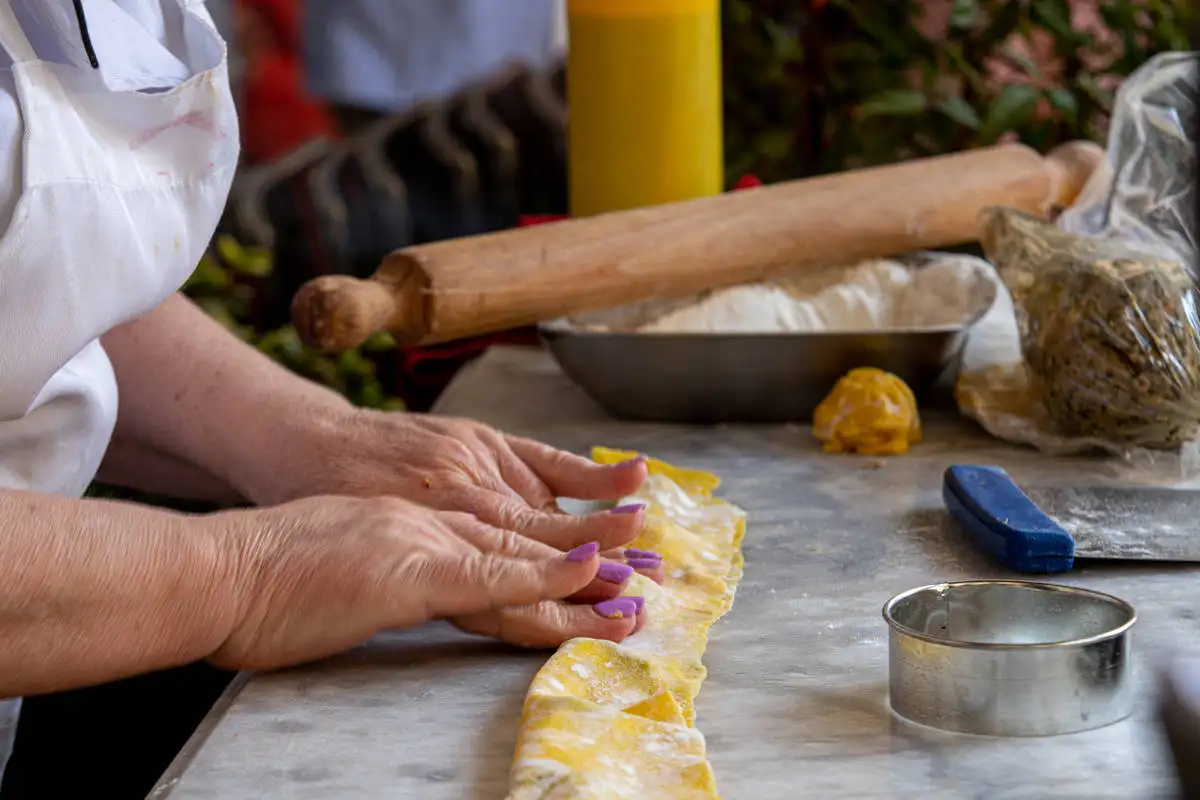
Excluding rural festivals like threshing, harvesting, and grape picking, the special days in the Arezzo countryside were marked by major religious celebrations. With Easter came spring: housewives devoted themselves to the traditional Easter cleaning — chimneys cleaned of soot from cold winter nights, yards swept, and walls whitewashed with lime. The parish priest visited to bless the homes, so everything had to look tidy. Cleaning the house was somewhat like cleansing the soul.
During Holy Week, church bells were even tied up to keep silence.
Tables were adorned with wheat sheaves, herbs, and eggs symbolizing fertility and life. After winter rest, hens became more fertile and laid more eggs. The hardworking Valdichiana housewives prepared traditional Easter dishes like “ciaccia col rigatino” and various sweets. The oven was cleaned and heated specifically for baking bread. The queen of farmhouse breakfasts was the Easter Panina, bread enriched with rigatino and pieces of boiled eggs. They also made the traditional Ciambellino, a ring-shaped sweet symbolizing Christ’s crown of thorns.
On Easter morning, eggs were boiled, wrapped in a white napkin with knotted corners, and taken by women to church for blessing. Returning from Mass, families celebrated with a rich breakfast: a blessed egg each, Easter Panina served with cured meats, sweets, and wine. A hearty breakfast was followed by a simpler lunch: pasta in broth and boiled hen or stewed meat, often rabbit.
